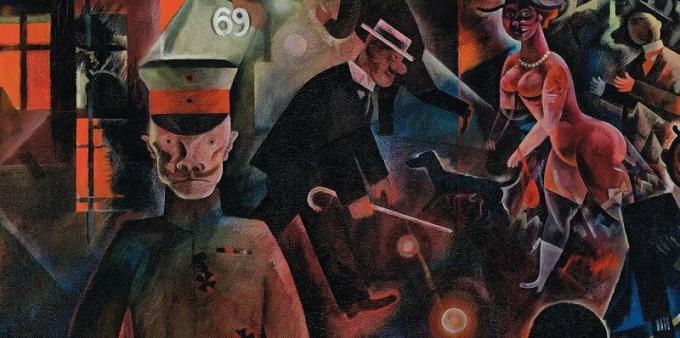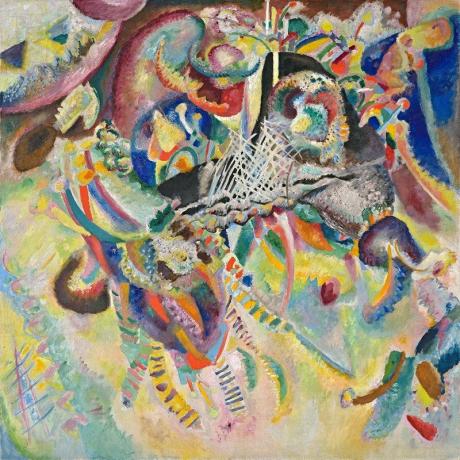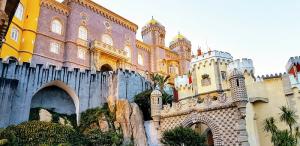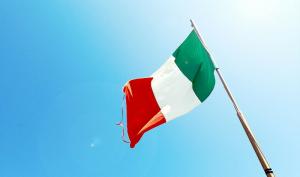Expressionism: what it is and characteristics of this artistic movement
In June 1905, the same year as the first exhibition fauvist broke the schemes of the French bourgeoisie, a group of students from Dresden came together in a radical act of protest against society. This vanguard called itself die brucke (The Bridge), the first large group (and possibly the only truly cohesive one) of the movement that received the name of expressionism.
die brucke it brought together what, later, would be the most representative artists of expressionism, especially German. Fritz Bleyl, Erich Heckel, Karl Schimdt-Rottluf and, above all, Ernst Ludwig Kirchner, who were later they would add other illustrious names such as Max Hermann Pechstein, Emil Nolde, Otto Müller and Kees van Dongen. The latter, despite being strictly Fauvist, belonged to the group for a year as an honorary member.
Who were these rebel artists who passionately protested against the deep contradictions of prewar society? We find out below.
Expressionism: origin of this artistic movement
The roots of expressionism can be traced back many years before the creation of Die Brücke. In fact, we can speak of expressionism many centuries before, if we take the work of El Greco (1541-1614), for For example, or Matthias Grünewald (1475/80-1528), whose painting was, by the way, much admired by the expressionists of the XX. But
perhaps the great predecessor of dark expressionism was Francisco de Goya (1746-1828) who, with his painful and anguished black paintings, was a hundred years ahead of the rise of the “canonical” movement.According to Mario de Micheli in his extraordinary book The Vanguards of the 20th centuryIt seems that it was Pechstein (1881-1955) who used the term "expressionist" for the first time to refer to one of his works. According to this story, the Berlin Secession jury asked if the style of his paintings was could continue to call impressionism, to which Pechstein replied no, that "it was expressionism".
There are, however, some discrepancies, since it seems that Paul Cassirier, a Berliner who was dedicated to trade of artistic objects, he had previously called the engravings of Edvard Munch (1863-1944). The history of general art places Munch precisely as the "father" of expressionism at the end of the century., although in reality the artist never belonged to the group, despite the fact that he played the role of friend and protector. Something similar to what Édouard Manet was for the impressionists.
- Related article: "History of Art: what is it and what does this discipline study?"
A cry for freedom in the artistic world
We have spoken of expressionism at the end of the century as “canonical” expressionism, but what are we really referring to? Well, unlike other avant-gardes such as the cubism or surrealism, quite cohesive and defined, expressionism is a kind of "mixture box" where artists of diverse and varied expression are registered.
It is not the same to talk about Kandinsky, one of the founders of the other great expressionist group, Der Blaue Reiter (The Blue Rider), that of George Grosz (1893-1959). While the former's works are filled with a color inherited directly from the Fauves and quickly approaches abstract painting, the latter The disturbing and dark work of the latter provokes a certain "rejection" by presenting a dark society full of beings that resemble puppets or wimps.

This is precisely the raison d'être of expressionism; is about a forceful protest, a cry (a scream rather) that, like the one that resonates in the famous canvas by Edvard Munch, the great guide and teacher, expands throughout the world and disrupts its foundations.

Expressionism is the son of a very specific era. At the end of the 19th century, the first voices to speak out against the prevailing violent positivism emerged, including the expressionists. In other words, expressionism is opposed to science and progress. A science and progress that, by the way, is what will end up leading humanity to the bloody First World War, the great tragedy of the first avant-garde.
It is also important to remember that the most remembered expressionist movement, the one that took place in Germany and, specifically, in the cities of Munich (Der Blaue Reiter) and Dresden and Berlin (die brucke), is partly the result of the aggressive pan-German policy of Kaiser Wilhelm II which, after all, contributed, and not a little, to the outbreak of the First World War. And if we understand that the expressionists felt rejection towards all that "German dream", we understand also why the Nazis, a few decades later, branded expressionist art as "art degenerate".
Madness, naivety, instinct
Precisely because of their exacerbated "anti-positivism" and the disenchantment they feel towards the world in which they have lived, the expressionists take as a reference to nihilist authors such as Friedrich Nietzsche (1844-1900) and, in general, endorse many of the foundations of German Romanticism. The expressionist world is a dreamy and dark world, full of fantasy and terror, where madness and the expression of the most primal instincts obtain a preponderant place. If what has to be attacked is the bourgeois society of this decadent world, the best way to do it is putting before his nose everything that, in his hypocrisy, he hates: sex, violence, alienation mental.
Alfred Kublin (1877-1959), one of the collaborators of Der Blaue Reiter, is especially known for his illustrations with a fantastic tone, inspired by the gothic tales of Edgar Allan Poe or E.T.A Hoffmann. His artistic corpus oozes darkness in an intense way; In this case, Kublin's personal life had a lot to do with it, since it is known that he had a difficult childhood with a very strict father and that, as a child, he mutilated small animals.
If what interested the expressionists was the forgotten, that is, the “unofficial”, it is not surprising that these artists so admired the creation of the mentally ill, children or the elderly; beings separated from the traditional circuits of art and who, for them, represented the most genuine expression of it. Der Blaue Reiter, for example, is behind one of the first exhibitions that were made of the so-called "outsider art" either Art Brut, in which the artistic creations of the patients were placed at the same level as that of the members of the group.
In the same way, primitive art fascinated the expressionists, because they saw in it that "lost paradise" they longed for, oblivious to the rotten modern civilization that annihilated the human being. This was nothing new. Paul Gauguin (1848-1903) had already done so a few years before when he left for Tahiti, and naive artists (from the French for “naive”) made their creations with a deliberately childish aesthetic.
The underlying idea behind it all was the prevailing need to escape from a stifling society, whose norms and conventions stifled human nature. The ways of escaping were diverse (madness, instincts, the naivety of the children's world, paradisiacal worlds) but the result was exactly the same: evasion.
Certainly, the contact of Die Brücke in its Berlin period with literary expressionism (tremendously forceful in its denunciation) and with radical formations such as die action they redoubled their anti-bourgeois anxieties and social denunciation. From 1911, therefore, the expressionist creations, at least those of the German scope, gave more importance to the content. However, die brucke it no longer enjoyed the cohesion of former times. In May 1913, its spokesman, Ernst Ludwig Kirchner, officially announced the dissolution of the group.
The great protagonists: die brucke and Der Blaue Reiter
The first names that we must bring up are the founders of the group par excellence of expressionism, the aforementioned die brucke (The bridge). The name is already very significant in itself. In the letter where the members invited Emil Nolde (1867-1956) to join them, It was said that the name, "the bridge", referred to the objective of the group, which was none other than to attract "all the revolutionary elements".. die brucke It was, therefore, a bridge that had to be crossed by all those who wished to shake the foundations of the bourgeois world.
Müller, Kirchner and Nolde were the members that underwent the greatest evolution. While in the paintings of these artists the explosion of repressed emotions through an amalgamation of darkness and faces that look like death masks, other expressionists like Max Hermann Pechstein will continue to show an exoticism much more decorative.
Ernst Ludwig Kirchner (1880-1938) stands as the soul of the group from the beginning and, in reality, his work will be the most representative. The characters that move around the cities in his paintings are not human beings, but automatons whose life is remotely controlled by some superior force. They have no will, their human soul has deteriorated to the limit. We see here, once again, one of the maxims of expressionism: the city, civilization, society, as castrating agents of all that is good in the human being.
In another line of expressionism we must place Vasili Kandinsky (1866-1944) and Franz Marc (1880-1916), the creators of Der Blaue Reiter (The Blue Rider), an ambitious artistic project that came to light in 1911 in Munich. The immediate precedent was the Neue Künstlervereinigung (New Association of Munich Artists), of which almost all the relevant artists of the effervescent cultural panorama of the Bavarian capital were a part.
The artists of Der Blaue Reiter They only had in common with Die Brücke their fight against positivism and their rejection of bourgeois society. Kandinksy and his company were supporters of a much more spiritual art, quite removed from the impulses rampant and dark worlds that Kirchner and his companions vomited, almost literally, on the fabric.
Der Blaue Reiter he leans more towards a refined painting, closely connected with other artistic expressions such as music. Thus, while the artists of Die Brücke expressed with, we could say, a certain "rapture", Kandinsky's philosophy leaned more towards a liberation of the soul through colour.
In Kandinsky's works, colors float, “dance” as if to the beat of music. The liberation of the tonalities and his separation from the motif are total, to the point that, already in his first paintings, the Russian painter aims for total abstraction. His ideas are reflected in his immortal book Of the spiritual in art, published in 1911 and which is a true revelation about the expressive power of colour. Obviously, Kandinsky's work owed a lot to the unleashed brush of the Fauves.

Another component of Der Blaue Reiter It was August Macke (1887-1914), who incidentally met his death in the ranks of World War I at the young age of twenty-seven. Macke also achieved delicate expression through the Fauvist coloring of his paintings. Among the female figures, it is important to highlight Gabriele Münter (1877-1962); She was Kandisnky's partner and one of the most active (and forgotten) artists of German Expressionism.



